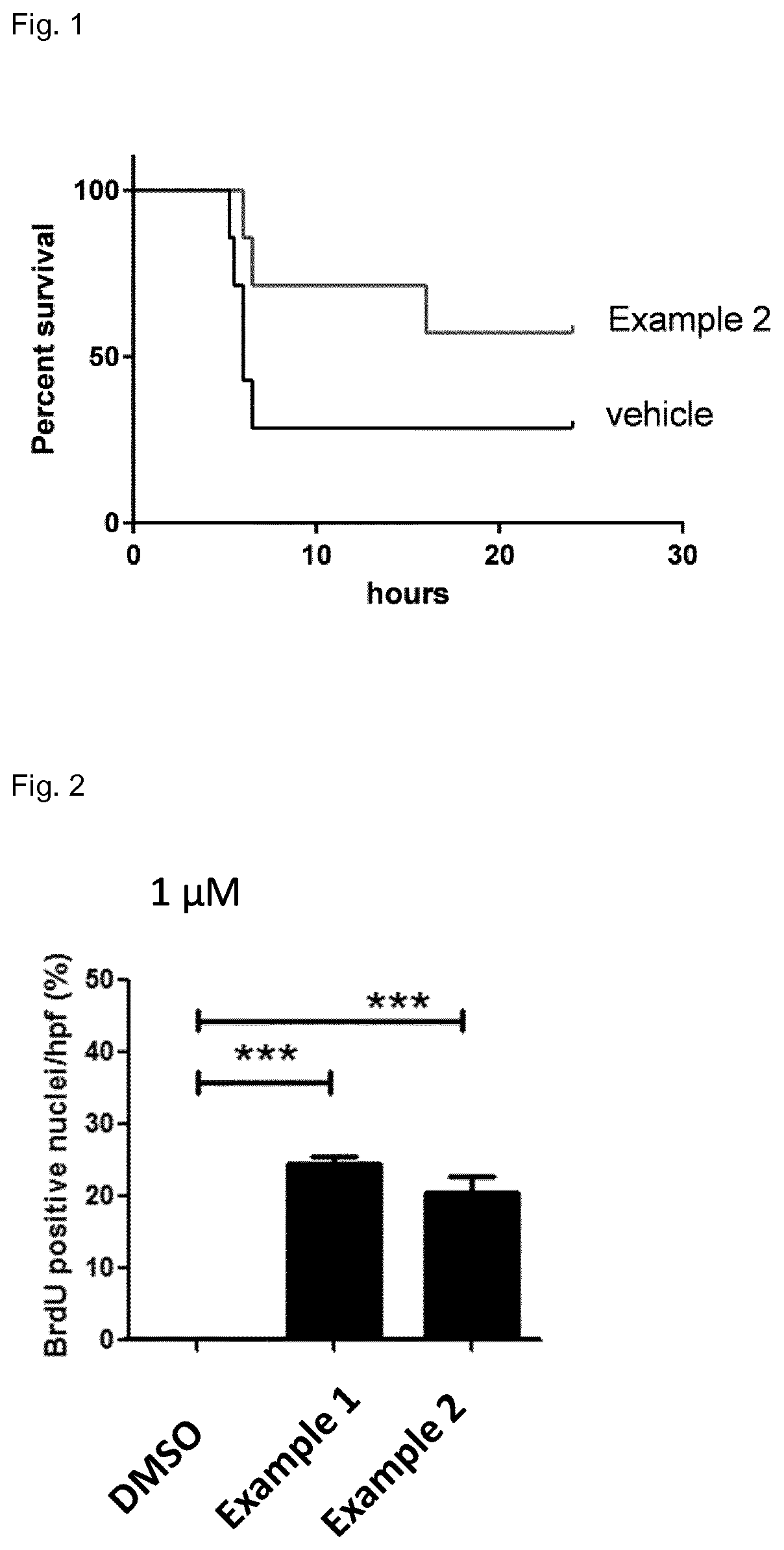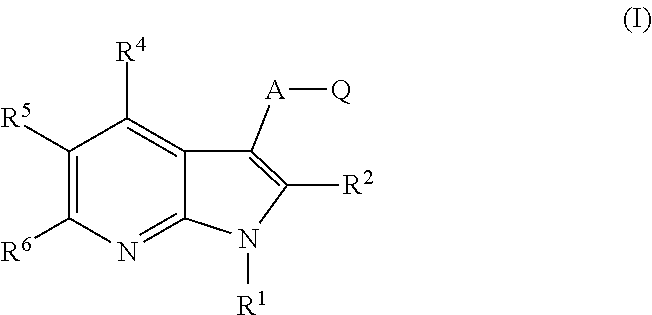Protein kinase inhibitors for promoting liver regeneration or reducing or preventing hepatocyte death
a technology of hepatocyte death and protein kinase inhibitors, which is applied in the direction of organic chemistry, organic active ingredients, drug compositions, etc., to achieve the effect of promoting liver regeneration, reducing or preventing hepatocyte death
- Summary
- Abstract
- Description
- Claims
- Application Information
AI Technical Summary
Benefits of technology
Problems solved by technology
Method used
Image
Examples
example 1
-sulfonic acid [3-(5-chloro-1H-pyrrolo[2,3-b]pyridine-3-carbonyl)-2,4-difluoro-phenyl}amide
[0381]
prepared as disclosed in WO 2007 / 002433.
example 2
-sulfonic acid {3-[5-(4-chloro-phenyl)-1H-pyrrolo[2,3-b]pyridine-3-carbonyl]-2,4-difluoro-phenyl}-amide
[0382]
prepared as disclosed in WO 2007 / 002433.
[0383]For the preparation of compounds of the invention general procedures aa to ae were used:
[0384]General Procedure aa:
[0385]Oxalyl chloride (1.1 eq.) was added to a suspension of carboxylic acid (1.0 eq.) in dry DCM (0.5 m). Some drops of DMF were added and the resulting mixture was stirred at room temperature until the gas formation was complete. An excess of MeOH was added to the solution and the solvent was evaporated under reduced pressure. The residual was dried in vacuo and the product was used without further purification.
[0386]General Procedure ab:
[0387]Pd / C (0.1 eq.) was added to a solution of the nitrobenzene (1.0 eq.) in EtOH (0.2 m). The suspension was degassed with H2 and the reaction was stirred at room temperature upon complete consumption of the starting material. Then, the mixture was passed through a Celite pad and ...
example 3
fluoro-3-(5-(4-methoxyphenyl)-1H-pyrrolo[2,3-b]pyridine-3-carbonyl) phenyl)propane-1-sulfonamide above)
[0424]
[0425]Procedure: The title compound was obtained by following GP ad.
[0426]Yield: 22.7 mg, 47 μmol, 36% (white solid)
[0427]TLC: DCM / MeOH 5%
[0428]1H NMR (DMSO-d6 400 MHz, ppm): δ 12.96 (s, 1H), 9.78 (s, 1H), 8.67 (d, J=1.7 Hz, 1H), 8.57 (s, 1H), 8.21 (s, 1H), 7.68 (d, J=8.5 Hz, 2H), 7.59 (dd, J=14.8, 8.9 Hz, 1H), 7.28 (t, J=8.5 Hz, 1H), 7.08 (d, J=8.6 Hz, 2H), 3.82 (s, 3H), 3.19-3.06 (m, 2H), 1.74 (dq, J=14.7, 7.2 Hz, 2H), 0.96 (t, J=7.4 Hz, 3H); 13C NMR (DMSO-d6, 101 Hz, ppm): δ 180.5, 159.0, 156.0 (dd, J=246.6, 6.9 Hz), 152.4 (dd, J=258.5, 8.9 Hz), 148.5, 143.7, 138.4, 131.3, 130.4, 128.7 (d, J=8.7 Hz), 128.2, 126.4, 121.9 (dd, J=13.1, 3.6 Hz), 118.2 (dd, J=25.0, 23.0 Hz), 117.5, 115.6, 114.6, 112.2 (dd, J=22.5, 3.3 Hz), 55.2, 53.5, 16.74, 12.5. TLC-MS: m / z calculated for C24H21F2N3O4S ([M-H]−): 484.1, found: 484.2.
PUM
 Login to View More
Login to View More Abstract
Description
Claims
Application Information
 Login to View More
Login to View More - R&D
- Intellectual Property
- Life Sciences
- Materials
- Tech Scout
- Unparalleled Data Quality
- Higher Quality Content
- 60% Fewer Hallucinations
Browse by: Latest US Patents, China's latest patents, Technical Efficacy Thesaurus, Application Domain, Technology Topic, Popular Technical Reports.
© 2025 PatSnap. All rights reserved.Legal|Privacy policy|Modern Slavery Act Transparency Statement|Sitemap|About US| Contact US: help@patsnap.com



